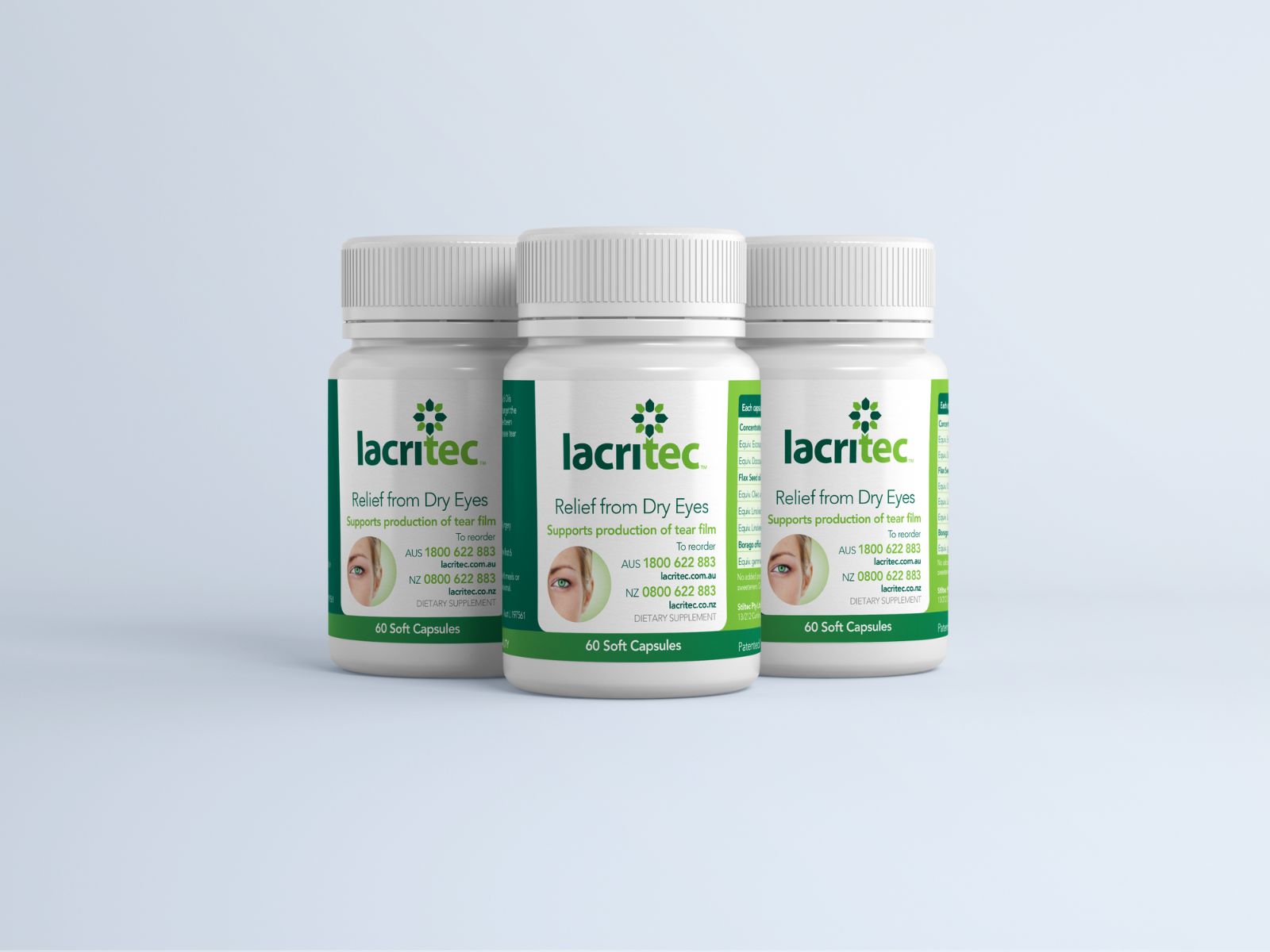Lacritec

Talk about your brand
Talk about your brand
Talk about your brand

Talk about your brand
Talk about your brand
Talk about your brand

Talk about your brand
Talk about your brand
Talk about your brand
-
Relieve Dry Eyes & Soreness
Lacritec delivers a proprietary blend of omega fatty acids sourced from Flax Seed, Fish Oil and Borage Oil in a softgel capsule, which reduce lacrimal gland inflammation, resulting in improved tear production, tear film break up time, and reduced tear film surface tension.
-
Quality Ingredients
Manufactured in a world-renowned Australian facility, this product is meticulously formulated with premium ingredients to ensure optimal performance. Every component of Lacritec is carefully chosen for its exceptional quality and therapeutic benefits.
-
Lacritec is Ideal for:
▪️ Ongoing dry eye syndrome
▪️ Contact lens wearers
▪️ Air travel and air conditioning
▪️ Eye strain
▪️ Eye procedures inc. Laser Eye Surgery
▪️ And more

Why choose Lacritec?
- Lacritec can relieve dry eyes & eye soreness
- Unlike drops, Lacritec works from the inside out to target the root causes of dry eye
- Lacritec can offer uninterrupted dry eye relief with continued use; results typically experienced within 4-6 weeks
- Lacritec can relieve watery eyes and excessive lacrimation
- Lacritec supports healthy eye function & eye health
- Unique combination of proven ingredients
- Lacritec may replace the need for eye drops for patients (A follow up of 209 Lacritec patients showed significant symptom improvement & an average halving of their eye drop usage after 8 weeks)
- Lacritec is much more powerful than flaxseed oil or fish oil alone. It provides the unique omega fatty acid, GLA, from Borage Oil that cannot be easily obtained from diet alone
Ingredients list
Collapsible content

Concentrated Omega-3 Triglycerides-fish 332 mg
Equiv. Eicosapentaenoic acid (EPA) 134 mg
Equiv. Docosahexaenoic acid (DHA) 66.8 mg
Flax Seed oil (Linseed) 334 mg
Equiv. Oleic acid 58.5 mg
Equiv. Linoleic acid 58.5 mg
Equiv. Linolenic acid 192 mg
Borago officinalis seed oil fixed 434 mg
Equiv. gamma-Linolenic acid 95.5 mg
Symptoms & Causes of Dry Eyes
Symptoms
- Stinging
- Burning
- Pain
- Itching
- Redness
- Blurred Vision
- Gritty feeling
- Light Sensitivity
Age
Dry eye syndrome affects 75% of people over age 65. Tear volume decreases from age 18 as much as 60% by age 65.
Hormonal Changes
Hormonal changes cause decreased tear production brought on by pregnancy, lactation, menstruation, and menopause.
Extended Contact Lens Wear
Extended contact lens wear can result in dry eye from corneal oxygen and nutrient deficiency. Protein build-up on the contact lens can produce a breeding ground for bacterial growth and surface roughness, further contributing to inflammatory changes. Some contact lens solutions contain preservatives that can also cause chemical irritation of the corneal surface and result in dry eye symptoms.
Blepharitis
Blepharitis can often cause dry eye symptoms due to inflammation of the eyelid margins, which is caused by a bacterial infection (Staphylococci). This condition can compromise the quality of the tear film causing tears to evaporate more quickly. The bacteria produce waste material that can cause a mild toxic reaction leading to chronic red, irritated eyes.
LASIK Surgery
LASIK Surgery temporarily disrupts the ocular surface / lacrimal gland unit. Also, during LASIK, roughly 60-70% of the superficial nerve fibres in the cornea are severed, which reduces sensation and affects aqueous tear production and delays wound healing. With compromised sensation, the blink rate can slow to the point that the tear film breaks up before the next blink can reconstitute. Though this condition usually clears up after a few months, it may result in mild to severe dry eye syndrome for several months after surgery.
Computer Use
Computer use causes most people to blink less frequently (about 7 times per minute vs. a normal rate of around 22 times/minute). This leads to increased evaporation along with the fatigue and eye-strain associated with staring at a computer monitor. Any task requiring a great deal of concentration can result in decreased blink rate.
Medications
Medications that can cause dry eyes include antibiotics, blood pressure medications, antidepressants, diuretics, some eye drops, cold and flu medications, antihistamines, birth control pills, appetite suppressants, and ulcer medications.
Diseases
Diseases that may be associated with dry eyes include Rheumatoid Arthritis, Sjögrens Syndrome, Diabetes, Asthma, Thyroid disease, Lupus, and Glaucoma.
